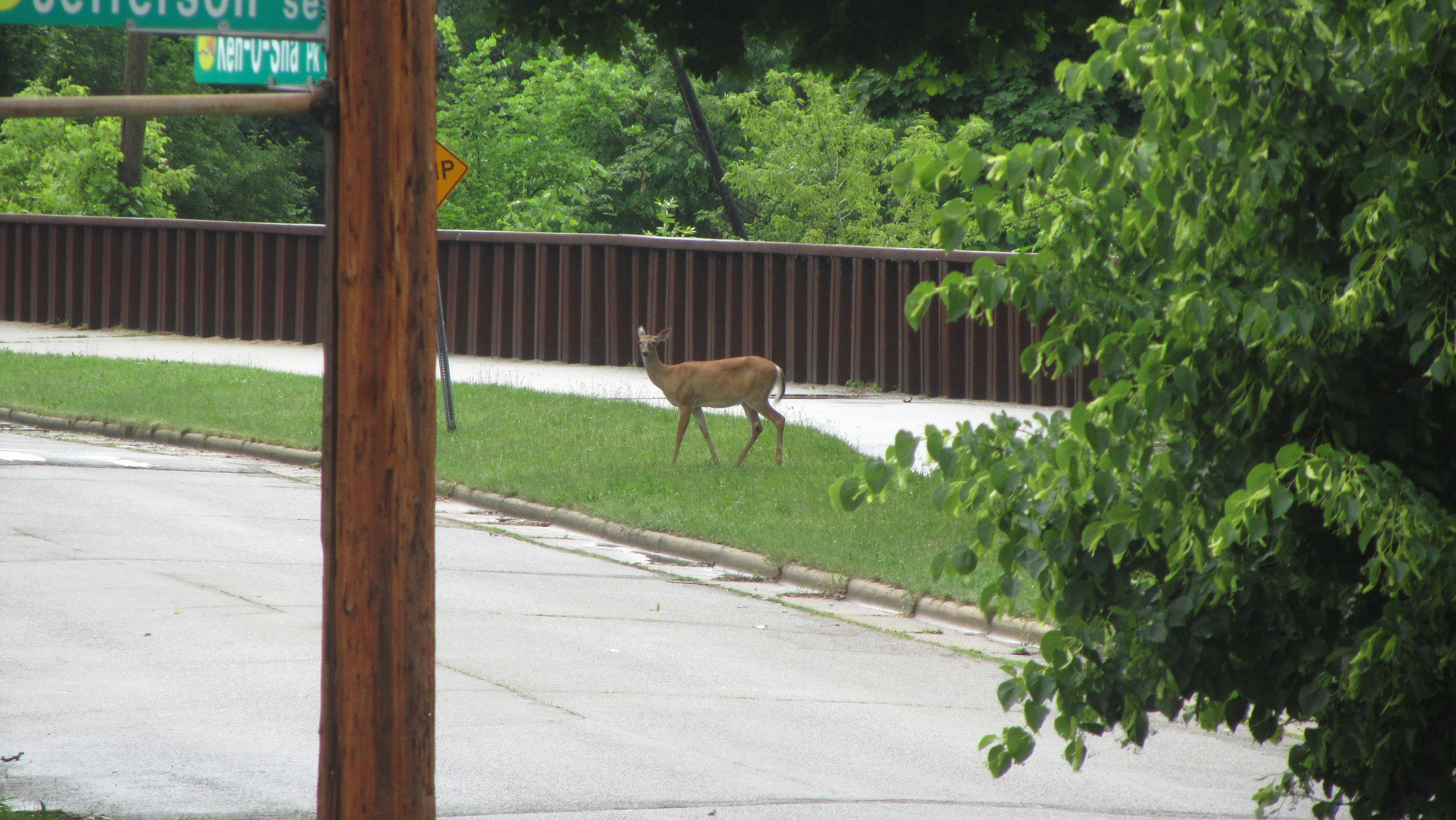A cull is a kill, and it’s an overreaction to deer ‘problem’
For years we have contemplated a move to Ann Arbor when our household is fully retired. We love the cultural opportunities, but more important, the values focused on human rights and compassion and care for all creatures, expressed through past actions taken by the Ann Arbor City Council.
But the recent debate about deer management, and the resulting plan to cull deer, seem antithetical to those values.
According to an article in the Ann Arbor Observer, city administrator Steve Powers submitted a report to the city council in 2014 concluding that “If the plan (on options for managing the deer population) recommends lethal methods, and City Council agrees with the plan, a cull could occur in February” of 2015.
This is disappointing. The deer “problem” was identified through anecdotal evidence supplied by a neighborhood group concerned about their gardens, led by a landscape architect. In reviewing media reports about the process there is no indication of any scientific attempt to define the problem before a council member presented her resolution on managing the deer population. There is mention of an aerial survey, with no indication the observers were experienced and objective, and the report has yet to be released.
It is also disappointing because the probable outcome is such a violent action in a city that seems so focused on peace, co-existence and non-violence. As the alleged “problem” has been defined, it sounds like deer are a nuisance, not a threat. I have a neighbor who plays his music too loud. He is a nuisance. Are we as a species inclined to kill an inconvenience?
Deer are an important and beautiful part of Michigan’s wildlife, and their paths cross often with humans, occasionally in unwelcome ways. Does that give us the right to kill them when they get in our way?
Some of the comments from members of the Washtenaw Citizens for Ecological Balance suggest that deer are a threat. Unfortunately, the comments are not backed by evidence. There is a suggestion that deer are a threat to dogs, with one anecdotal case mentioned.
Another concern was that deer are a threat to human health because of Lyme disease (no Washtenaw County cases have been diagnosed), and a series of other potential diseases. Chronic wasting disease did occur in an animal in Kent County in 2008, likely a result of baiting – leaving piles of fruit and vegetables near a deer blind – by hunters.
The truth is, people with influence believe there are too many deer in Ann Arbor, and they see reduction in herd size as the only answer. But how many do you kill? Now we are back to that pesky data collection issue. If you don’t know how many are here, and you don’t know how many can be reasonably sustained, how can you decide on the number to kill?
Furthermore, the killing option often exacerbates the problem. Deer are highly prolific; their productivity rate increases as their numbers lessen and more food becomes available. The biggest hunting states, including Michigan, have the highest deer density for this reason.
Perhaps some other options could be considered. Ideally the highly successful Trap Neuter Release programs used with feral cats could be adapted and applied to whitetail doe. However, a wildlife veterinarian friend indicated that we are some years away from being able to use this technique successfully with larger, stronger animals. We can actively encourage professionals in this field to continue research with immunocontraceptive methods of herd reduction.
In the meantime, perhaps gardeners can find ways to co-exist with deer in this “city of trees,” by planting deer-resistant flora. Perhaps the council could prohibit residents from putting out deer feeding stations in their yards.
Is it possible for science, ethics, and politics to merge on this issue and seek humane, non-lethal techniques to address the current problem, to let scientists continue to research this new phenomenon (the deer abundance issue is only 20 years old), and continue to co-exist with our urban four-legged friends who, like Ann Arbor’s human residents, are peace-loving creatures.
See what new members are saying about why they donated to Bridge Michigan:
- “In order for this information to be accurate and unbiased it must be underwritten by its readers, not by special interests.” - Larry S.
- “Not many other media sources report on the topics Bridge does.” - Susan B.
- “Your journalism is outstanding and rare these days.” - Mark S.
If you want to ensure the future of nonpartisan, nonprofit Michigan journalism, please become a member today. You, too, will be asked why you donated and maybe we'll feature your quote next time!


 Large wild mammals can, and do, coexist quite well with people -- until they start nibbling petunias. (Photo by John Eisenschenk via Flickr; used under Creative Commons license)
Large wild mammals can, and do, coexist quite well with people -- until they start nibbling petunias. (Photo by John Eisenschenk via Flickr; used under Creative Commons license) M Kate Murphy retired from Michigan State University in 2001 where she served as Assistant Director in the Department of Residence Life for 26 years. Since then she has engaged in numerous volunteer activities including Ann Arbor Summer Fest, Ann Arbor Civic Theater, Livingston County Democratic Party, Pinckney Players, and the Humane Society of Huron Valley where she also serves on the Board of Directors.
M Kate Murphy retired from Michigan State University in 2001 where she served as Assistant Director in the Department of Residence Life for 26 years. Since then she has engaged in numerous volunteer activities including Ann Arbor Summer Fest, Ann Arbor Civic Theater, Livingston County Democratic Party, Pinckney Players, and the Humane Society of Huron Valley where she also serves on the Board of Directors.